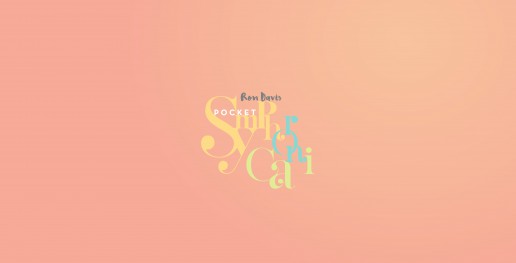CD features Windsor Symphony Orchestra with Ron Davis
Ted Shaw, The Windsor Star
A CD recorded while John Morris Russell was still at the helm of the Windsor Symphony Orchestra is set for release in October.
Symphronica is the newest release from Toronto composer and jazz artist Ron Davis, who performed the work with the WSO and Russell, now conductor of the Cincinnati Pops, in January 2012.
In my review of that concert, I wrote: "The classically trained Davis fused orchestral music to jazz in works that quote such composers as Bach, Prokofiev and Stravinsky. ... The orchestrations are reminiscent of the symphonic where to buy phentermine online safely early recordings of Chuck Mangione and the orchestra sessions Miles Davis did with Gil Evans."
The album is highlighted by a reel based on a Quebec fiddle tune played by WSO concertmaster, Lillian Scheirich.
The CD will be released Oct. 1 and officially launched at concerts at Toronto's Lula Lounge in late October, early November. Those concerts will feature two Windsor musicians, violinist Anna Atkinson and cellist George Meanwell along with Davis' performing trio of Kevin Barrett, Mike Downes and Roger Travassos.
Classical and jazz mix as... Ron Davis goes symphonic
By a happy coincidence, today marks two orchestral events in Toronto that bridge the usual divide between classical and jazz. They are the launch of Ron Davis’s Symphronica CD featuring his original compositions performed by the Windsor Symphony Orchestra, and Sneak Peek Orchestra’s “Coltrane Ballade” concert this evening at the Al Green Theatre featuring Daniel Jamieson’s DanJam Orchestra.
The most exciting concerts in our city make a genuine effort to connect musical genres and art forms. Some use this as a foundation for their entire season (as is the case with the Talisker Players); others explore the possibilities as opportunities arise (see previous articles on Musical Toronto about Eybler Quartet and Ensemble Polaris.)
Jazz pianist and composer Ron Davis may not be familiar to fans of classical music, but his roots are firmly planted in classical music with his early studies under Darwyn Aitken — a student of Oscar Peterson and classical great David Saperton — at the Royal Conservatory of Music.
If you saw Davis perform recently at Paul Hahn & Co. as they celebrated their 100th birthday, or at the launch of Alliance Francaise’s 2013-2014 cultural season, you will no doubt recall his entertaining and virtuosic style.
Davis moves between the jazz and classical genre with unassuming ease. He once was an assistant professor of French linguistics at the University of Toronto, he trained as a lawyer, and he boasts a melange of other pursuits that you wouldn’t expect a performer to have under their belt. (Or perhaps most simply don’t flaunt their non-musical accomplishments enough.)
Knowing a little more about Davis makes listening to the Symphronica CD all the more satisfying. The six original tunes harken back to the origins of today’s jazz standards. The Windsor Symphony Orchestra shines in the recording under the direction of John Morris Russell, performing Davis works arranged for his jazz trio and orchestra.
Watching Davis at the piano is also a joy. There is a rare “no holds barred” honesty in his performances that audiences are drawn to. We rely on music to express what words cannot convey, and Davis certainly has a lot to tell us through his compositions.
Forging deep connections between composers, performing artists and audiences is a cornerstone for Sneak Peek Orchestra’s concerts. Their “Coltrane Ballade” concert this evening is their first all-jazz program, with maestro Victor Cheng showing off his jazz chops at the piano, giving way to his New-York-based Canadian collaborator and friend Daniel Jamieson to lead at the podium.
True to Sneak Peek Orchestra’s mandate, original works are on the programme along with the classics. This ensemble’s often thrilling interpretation of orchestral works holds the promise that tonight’s concert will be a memorable and exciting one for both performers and audiences.
There is a thirst from our young and emerging orchestral players for such genre-bending concerts, as exemplified by the growing interest in Simon Capet’s Classical Socials every Sunday at Fionn MacCool’s on Adelaide St W. His monthly Euphonia concerts at Lula Lounge — the last place you might expect to see a classical orchestra — is the same venue in which Davis has chosen to celebrate the launch of Symphronica over three Sundays, starting Oct. 27.
Euphonia violinist Tanya Charles and cellist Samuel Bisson frequently appear as Sneak Peek Orchestra’s concertmaster and principal cellist, respectively.
These young musicians are driven by a desire to revitalize classical music, agreeing to perform with only the promise of splitting the box office receipts, in the hope that the noise they are making collectively will shake the dormant audiences awake to start noticing the music around them.
A lot of conventional wisdom about what it means to be a classical performer is being questioned. For many young artists, it is increasingly the norm to engage in their artistic pursuits in parallel with other means of making a living. They are much more opened about trying different artistic involvements, casting their nets wide as there is no longer, and perhaps never was, any one formula for success.
It is inspiring to see a seasoned artist like Ron Davis continuing to break new ground, while a new generation of musicians is out to forge new rules of engagement for themselves. As they cultivate a new kind of audience, they are contributing to a movement that is larger than any one of them can bring about individually.
There is a symphony being orchestrated in the truest sense of the word: a harmony, a union of sound, different voices expressing the same sentiment in concert with each other.
Margaret Lam
is the founder of BeMused Network, and an occasional contributor to Musical Toronto. You can learn more about her at margism.com
WSO SymphRonica rocks!
In a sense, the two concerts by Windsor Symphony and Ron Davis at Chrysler Theatre Saturday and Sunday were tune-ups for their recording session Sunday night.
The featured works at all three were taken from the Davis set of compositions titled SymphRonica.
The classically trained Davis fused orchestral music to jazz in works that quote such composers as Bach, Prokofiev and Stravinsky.
He also borrowed from gospel, traditional Jewish folk songs and Quebec fiddle music, to name a few. The com-position Pawpwalk, meanwhile, has a Horace Silver-like groove.
The orchestrations of melodic material are reminiscent of the symphonic early recordings of Chuck Mangione and the orchestra sessions Miles Davis did with Gil Evans.
The concert featured many of the works that will make it on to the CD. There was a beautiful slow gospel composition, Allelujah, and a stunning ballad written for his wife, singer Daniela Nardi, titled Danza Daniela.
Nardi then joined him onstage to sing an Italian pop song.
Davis adapted a Bach melody from the St. Matthew Passion, Mache dich, mein Herze, rein, into a mesmerizing orchestral piece that called on flutist Jean-François Rompré, oboist Graham Mackenzie and the bass player in his trio, Mike Downes, for solos.
Another inventive composition, D'Ror Yikra, employed a traditional Jewish song with quotes from Stravinsky's The Rite of Spring.
John Morris Russell was back on the podium after an absence of more than month, and he seemed invigorated by the occasion. In the samba piece that ended the concert, Thomachonga, Russell left the conductor's stand and invited members of the orchestra to dance.
Another keynote work was Sergei's Shuffle, a boogie- woogie piano piece using themes from Prokofiev's Piano Sonata No. 7.
The trio, consisting of Davis on piano, Downes on bass and Ted Warren on drums, played two songs on their own - a cover of the 1950s pop hit My Shining Hour, and Davis's adaptation of a popular Polish song, retitled My Mother's Father's Song, which was the title of Davis' most recent CD.
The performance Saturday, unfortunately, was marred by the mushy microphone used by Davis. There were some minor flubs in the orchestra, too, which presumably were cleared up for the recording session.
He’s achieved the rare feat of bringing jazz to the symphony orchestra
“Ron Davis brought his show “Symphronica” to the Thunder Bay Symphony Orchestra, and left with everyone’s heart in his pocket. He has an embarassement of musical riches in his fingertips and a non-stop imagination. With the addition of a set of excellent charts, he’s achieved the rare feat of bringing buy phentermine online jazz to the symphony orchestra and doing full justice to both. When he wasn’t playing brilliantly he entertained the audience with endearing stories and left an indelible impression. This is crossover at it’s very best. It was a special event in our Pops series.”
Que fait-on lorsque l’on fait du jazz?
Le vendredi 4 octobre, l’Alliance Française de Toronto a réuni deux grands jazzmen de Toronto pour un concert exceptionnel.
D’entrée de jeu, Ron Davis l’a annoncé : « Ce soir, toutes les notes seront jouées dans les deux langues officielles ». Le ton était donné. Et quel ton! Ron Davis n’est pas n’importe qui. Ron Davis est un pianiste et compositeur torontois dont la carrière connaît un rayonnement international, notamment en Europe et au Japon. Ses principales influences pianistiques comprennent Art Tatum et Oscar Peterson, mais sa musique est pétrie d’influences diverses, allant du classique au rock en passant par le klezmer. Son plus récent projet, Symphronica, lui offre l’occasion d’interpréter ses compositions à la tête d’orchestres symphoniques.
Et pour l’accompagner ce soir, rien de moins que le contrebassiste, compositeur et pédagogue Mike Downes. L’un des jazzmen les plus en demande au pays, comme en témoigne la liste impressionnante de ses collaborateurs qui comprend, entre auters, Oliver Jones, Diana Krall et PJ Perry.
[...] L’improvisation joue une place centrale dans le jazz. Mais l’improvisation, c’est énormément de travail. Un travail en amont, pour être capable de s’exprimer comme on le veut avec un instrument.
Et c’est ce que ces deux musiciens ont fait en envoyant du rêve et du son au public. La définition du jazz en somme.
He is a wonderful pianist, delightful, funny.
"Ron Davis' "Symphronica" performance with the Windsor Symphony Orchestra was a real smash. He is a wonderful pianist, delightful, funny and an entertaining host. He breezed between French and English and kept the audience in rapt attention throughout. Ron had the right blend of standards and originals legal to buy ambien online (which are all excellent)... The arrangements are superb and the orchestra really enjoyed playing the show. Ron and his band were easy (and fun!) to work with; definitely one of the most popular Pops acts we have had since I have been here!"
Authentic heir of the greatest pianists of Toronto...breathtaking!
From the prestigious Russian journal Trud:
“…astonishing buy phentermine 37.5 technique, authentic heir of the greatest pianists of Toronto - "classic" Glenn Gould and jazz musician Oscar Peterson... breathtaking!”
Pianist Ron Davis (by the way, the husband of Daniela Nardi) - winner of an astonishing technique, authentic heir of the greatest pianists of Toronto - "classic" Glenn Gould and jazz musician Oscar Peterson. The way he played at the same time the left hand and right black piano on white elektropianino - breathtaking sight!
The laws of jazz
Jazz pianist Ron Davis (J.D. ʼ82) never quit the day job but for 18 years he did shelve his dream of being a professional musician.
Davis is the youngest son of a Jewish father and mother who had survived the horrors of the Holocaust as inmates of the Bergen Belsen concentration camp and the Skarzysko-Kamienna labour camp, respectively. His parents, who settled in Toronto in 1947, worried that a career in music would never pay the bills.
“The traumatic aftereffects were present in the household forever. My parents were amazing people who, despite being impoverished and denied a full education and a childhood, managed to create a somewhat normal, lower middleclass family life in Toronto, explains Davis in a telephone interview. My parents, having known what it was like to be destitute, didn’t want that for their son. They didn’t see the material comforts in a music career. They were worried about that. They urged me to become a lawyer.”
His father had bought him a piano when he was eight years old, after years of Ron pestering him. He recalls playing Maple Leaf Rag while he was at school, with the girls he liked gathering around him. Throughout his youth, he devoured classical music and jazz, practising up to 12 hours a day. He studied at the Royal Conservatory of Music in Toronto and with Darwyn Aitken, a student of Oscar Peterson’s.
However, in 1979, he set it all aside to come to the University of Ottawa to study common law in French. Davis says he had an affinity for the French language thanks to his parents, who had embraced Canada’s bilingualism, enrolling him in French school in Toronto.
While at uOttawa, Davis spent more time in the music practice rooms than he did studying, although he went to classes and ended up tied for 14th place in grades in his class.
In the mid-1980s, after working full-time as a civil litigation lawyer for a few years in Toronto, he decided to practise law part time and take an “academic detour” to study French linguistics.
In 1993, he got his PhD at the University of Toronto and was awarded a Department of French award for his thesis, Chrono-semantics: A Theory of Time and Memory. For the next five years, he was an assistant professor at the U of T.
However, when a jazz musician friend, saxophonist Doug Banwell, insisted that he start jamming with him in 1997, Davis re-connected with his true calling. One jam led to another and pretty soon, Davis was playing in cafès, and then, larger venues.
Black and white image of Ron Davis checking music notes sitting at a grand piano.
At a performance of Espresso Manifesto, live at Koerner Hall in Toronto. Photo: Arthur Mola.
Today, he is recording his 10th full-length album, Pocket Symphronica, and he has taken his critically-acclaimed, eclectic jazz blends on tour, playing in Russia, Japan, the United States, Hong Kong and Poland, not to mention countless gigs across southern Ontario and Quebec. Davis is a resident jazzman at Toronto’s legendary Lula Lounge.
Last March, he played the Tchaikovsky Concert Hall in Moscow with his wife, singer Daniela Nardi, in a show entitled Espresso Manifesto, which the couple had also performed at the Montreal Jazz Festival in 2013.
His latest album, due for release later this year on eOne Records, includes string quartet arrangements of his original songs, as well as a version of Lady Gaga’s “Poker Face.” The project is a follow-up to his last album, Symphronica, a jazz-symphony fusion album recorded with the Windsor Symphony Orchestra and renowned conductor John Morris Russell.
Even though he is now focused on music, Davis continues to work occasionally at the law firm of Fogler Rubonoff LLP, mainly providing legal support services. In the early 1990s, he worked on two major personal injury cases. He says there is a common thread that runs through the law, linguistics and jazz.
“The connection between trial law and jazz is in the process. The music I play is a strange balance between preparation and improvisation, says Davis. It is also a type of music that requires a great where to buy phentermine online deal of background work and study in order to free you to improvise. And litigation was the same. When you go into a courtroom you are not sure what is going to come up. You have to improvise but you need a lot of background training and preparation. It is fair to say that jazz is a vocabulary. It is a grammar; it has its own syntax. All of the elements that go into the makeup of a language are present in jazz.”
Davis is known for experimentation and innovation, mixing up genres which at first glance seem like oil and water. His eighth album, Blue Modules, blended rock and pop with postmodern jazz, and included Elvis Presley’s “Viva Las Vegas” and Jimi Hendrix’s “Voodoo Child.”
Davis says using jazz to find common ground across different styles of music is one way to keep the genre alive and relevant.
“Jazz is now over 100 years old. If you are born after 1985, jazz is probably going to be seen as your parents’ music, a bit like classical music. But jazz in its day was pop music ó parents didn’t want their kids to listen to it. Songs that are now jazz standards were pop songs in their day. I am really interested in capturing that spirit, in honouring the jazz tradition, but at the same time reaching people born after 1985 and saying here is that song you recognize and here is our jazz treatment of it, and this is the energy of jazz,” says Davis.
He also performs with Toronto-based Japanese taiko drumming group Nagata Shachu. He says he fell in love with their sound when he first saw them.
“I just knew I had to do something with them. It wasn’t an obvious pairing. We found a way to blend the sounds, says Davis. We rehearse in an industrial park in Scarborough. The only neighbours are machine shops, which are probably the only thing that makes more noise than a Japanese drumming ensemble.”
Davis also spent some time in Japan. In 2006, he was awarded the Japan Foundation’s Uchida Fellowship for the Performing Arts and was a visiting scholar at Hosei University in Tokyo.
For seven years, Davis was co-producer of Jazz for Herbie, a benefit concert series for the Hospital for Sick Children in Toronto. He is also a past secretary of the Glenn Gould Foundation.
Ron Davis sits at the piano with bright lights and a fellow musician in the background.
Ron Davis playing in the limelight at the Lula Lounge in Toronto in May 2014. Photo: Saul Lederman.
Now back in the studio, with sound engineer Dennis Patterson and his long-standing quartet of Kevin Barrett (guitar), Mike Downes (bass) and Roger Travassos (drums) all co-producing, how does Davis get ready to preserve his songs for posterity?
“It is a bit like asking a chef when they go into the kitchen, ‘Is the dish all planned out or is it all improvised?’ I have a pre-production spreadsheet of songs. Every project is different. With Pocket Symphronica, because there are so many moving parts, I can’t leave too much unplanned, but I also have to leave a fair bit of room for inspiration.”
Eighteen years after he returned to his true passion, Davis concedes that his parents were sort of right ñ even with 30 to 50 gigs each year, mainly in the very competitive jazz market of Toronto, and with nine albums recorded, it’s tough to make a living and it’s getting tougher. However, Davis has improvised his own unique career path.
“In the 18 years that I have been back in music the industry has changed radically. CD sales have plummeted ó online sales are much more important. It has come to the point where very few people ó maybe the Taylor Swifts ó generate income and profit from their recordings. Do I make ends meet? I am fortunate that I have my law degree. Pretty much everyone in the music business does something else.”
He adds, “When I first saw the ‘Defy the Conventional’ tagline, I thought, ‘That describes my life.’”
DANIELA NARDI’S ESPRESSO MANIFESTO
will continue its highly acclaimed intercontinental musical journey at Toronto’s historical Jazz Bistro beginning on January 17, 2016. As part of the Bistro's cabaret series, Nardi will continue through to April 16, presenting intimate and ever-changing sets celebrating Voice, Song & Music. The listener will experience songs by some of Italy's greatest legendary as well as, contemporary jazz and pop composers. The songbook includes material from Nardi's most recent recording "CANTO" as well as, from the internationally acclaimed recording "The Songs of Paolo Conte". Nardi's Espresso Manifesto is not only a musical experience but a cultural one, with music lovers and critics alike using such buzz words as universal, exotic, vibrant, sensuous in order to describe this truly unique artist & her ensemble. Come hear why critics and music lovers from Montreal to Moscow are embracing Daniela Nardi and her Espresso Manifesto.
Showtime: 7.00pm-9.30pm, 2 – 1 hour sets
Tickets: Single tickets $20.00 but purchase the series (that is 3 tickets) for $55.00
The Jazz Bistro is one of Toronto's formidable jazz clubs. Be sure to call the club to reserve your table. Call NOW at: 416. 363.5299
POCKET SYMPHRONICA CD RELEASE CONCERT
Ron Davis and SYMPHRONICA are releasing Pocket Symphronica (Really Rcords/ eOne) – a studio recording of their incredible, one-of-a-kind, original music.
The recording is the culmination of several years of playing and planning. Co-produced by Ron and Dennis Patterson, along with SYMPHRONICA members Mike Downes, Roger Travassos and Kevin Barrett, this fantastic project is bound for glory.
Join us for this buy phentermine 37.5 online special concert and celebrate the launch of Pocket Symphronica!
GUEST HOST: JAYMZ BEEof JAZZ.FM91 Doors: 6:30 Music: 7:30 Lula Lounge - 1585 Dundas St W Toronto M6J 1T9 TICKETS: $20 advance/ $25 door; students/seniors $10/$15. Buy from BE-MUSED.CA or 416-588-0307.(All prices HST included.) #Symphronica









